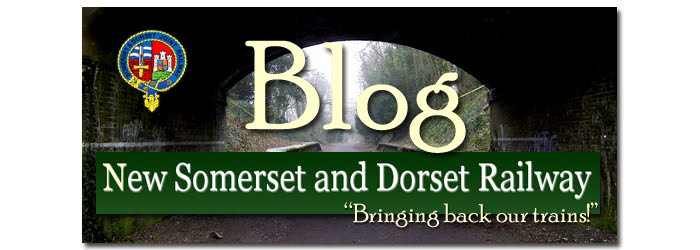
A two parter today - I'm getting a huge build up of articles, ideas etc, which has to be a good thing!
Top photo is a superb atmosphere shot of Blandford in the last few weeks before temporary closure in 1966. Night photography back then was a real challenge and the photographer (Joe Robbins) is a real hero of the S&D. We've all seen the classic S&D shots, double headers hauling the Pines through Midford etc, but I love the atmosphere shots most of all.
I know, I'm a hard-headed business person, so this shouldn't appeal to me. But, to me, it taps into memories of waiting around on stations at night. There's no sense of threat here, not even one of foreboding which could be excused due to the circumstances! It's the solidity, the sense of quiet purpose, more importantly the sense of connectedness. You don't get this with roads - an empty road at night is a spooky place ... and even 'modern' railway stations lack a lot of this.
Think of Blandford today. Remarkably rail-less, even if just for a few more years, bland and characterless, with nothing like the above to make it stand out. Just waiting really, for the New S&D's time to come.
Sentimental? Not at all. To fill our trains in the future, and there will be an awful lot of them, we need to make the railway environment as comfortable, friendly, familiar and, yes, English, as the above shot. We don't want bus shelters, trains where the seats don't match the windows, services stopping at 9pm rather than 1am and starting again at 7am rather than 4am. There'll be almost as many trains at night as in the day, possibly more when you factor the freight trains in. We deserve a pleasant environment to do our stuff in. The harsh brutality of 60s architecture offers nothing to us 21st century types. The pathetic haste in which ESSENTIAL railways were closed under the most crooked circumstances should never be forgotten - or forgiven. This photo, to me, has the same redemptive - and predictive - power as the 'Perchance it is not dead' wreath at Barnstaple Town.

And completely unsentimentally here's the lean-to oil store at Midford as it was in September 1961 (photo © John Eyers). Had this survived, or been rebuilt, I'd have been up there today in the rain - but sadly the oil store will not reappear for a little while yet! This is a particularly nice shot as it shows all our trackbed up to the Long Arch Bridge.
Both these photos appear in the superb S&D Telegraph number 36, available to members of the SDRHT at Midsomer Norton and usually available at their shop, as well as other back issues.




































